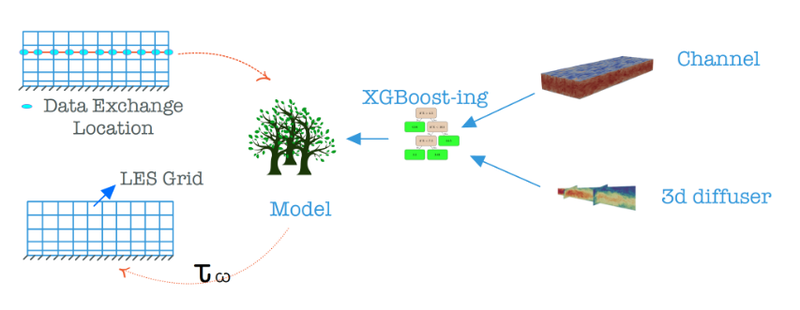Development of novel wall models for Large Eddy Simulation
Jun 11, 2024
Sarath Radhakrishnan defended his thesis co-supervised by Oriol Lehmkuhl Barba and Daniel Mira Martinez on 10th of June at Campus UPC. Entitled “Non-equilibrium wall modeling in Large Eddy Simulation of high-speed transitional flows“, the thesis presents three novel methodologies for the development of wall models, two of which are based on Machine Learning
Wall-modeled large eddy simulation (WMLES) is a practical tool to perform the wall-bounded large eddy simulation (LES) with less computational cost by avoiding explicit resolution of the region near the wall. However, its use is limited in flows that have high non-equilibrium effects, like separation and/or transition.
In this work, three wall modeling strategies are presented, two of them based on high-fidelity data. First, a technique is presented to improve the robustness of the state-of-the-art algebraic wall shear stress model. Second, an equilibrium-data-driven wall shear stress model is developed using the LES of the channel data. The key purpose of this is to estabilish the methodology of model development using high-fidelity data. The model is built using a machine learning technique that uses gradient-boosted regression trees (GBRT). The objective of the model is to learn the boundary layer of a turbulent channel flow so that it can be used in significantly different flows where the equilibrium assumptions are valid. The importance of selecting the appropriate data for training and the importance of choosing the input of the model are described.
The model is validated a priori and a posteriori. A posteriori tests are conducted by implementing the model in a multiphysics solver and using it in the turbulent channel flow and in the flow over a wall-mounted hump. The performance of the model is compared with an algebraic wall shear stress model to understand the strengths and shortcomings of the data-based models and further improve the same.
In the next step, the model is upgraded to a non-equilibrium wall model by using non-equilibrium data for the training. The high-fidelity data chosen for training include the Direct Numerical Simulation (DNS) of a double diffuser that has strong non-equilibrium flow regions and LES of a channel flow. The ultimate purpose of this model is to distinguish between equilibrium and non-equilibrium regions and to provide the appropriate wall shear stress. The ML system used for this study is also GBRT. The model is tested a priori and a posteriori. A posteriori tests are conducted on the diffuser, channel flows, flow over the hump, and junction flows. These tests showed that the model is very effective for corner flows and flows that involve relaminarization, while it performs rather less effectively in recirculation regions.

Share: